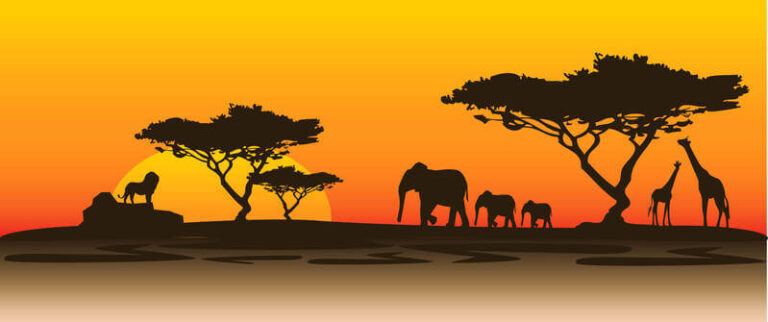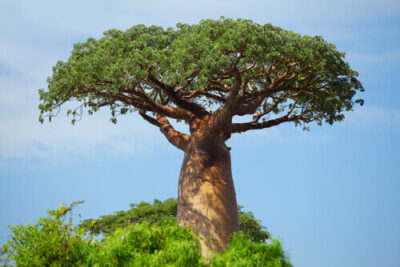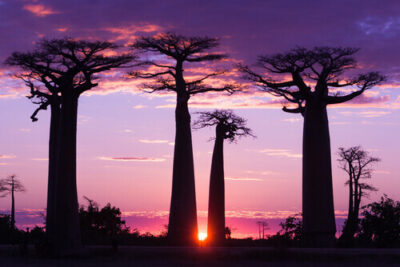Interesting Baobab Tree Facts

Welcome. If you’ve reached this blog, you either noticed the “Easter egg” in our annual calendar with the URL to this blog or happened to find this content in Google or on the FSSI website.
So, what’s this post all about? Why is a document outsourcing specialist talking about baobab trees?
FSSI’s Annual Theme
At FSSI, we create an annual theme each year to help promote and market our products and services in a creative, fun and engaging way. This year’s theme takes our employees and clients on a safari adventure, with the theme called “Taming Customer Communications Since 1980” – where no two safaris (i.e., print, mail or electronic jobs) are the same and expert guides seamlessly handle complex communications and navigate the breathtaking landscape with ease.
How do baobab trees fit in? Baobab trees are a crucial part of the African landscape (they’re in Australia too) – and much more important than you think. They also feature prominently in the imagery for our annual theme.

What is a Baobab Tree?
Baobab trees, known as the “tree of life,” are succulents, that thrive in hot desert climates and store water during the rainy season – with a huge barrel-like trunk that stores water. Its appearance almost looks like the tree is upside down, with a series of roots at the top for its branches. The tree itself has a compact top – where the branches and leaves are – and a long, cylindrical trunk.
The baobab tree can extend almost 60 feet high – and can have a trunk 30 feet in diameter! It has pendulous flowers that are pollinated by bats and bush babies.
The trees provide shelter, food and water for animals and humans – the main reason many communities, and animals, make their homes near baobab trees.
Impressively, the tree can live up to 5,000 years old.
Facts About the Baobab Tree
- The baobab tree is an icon of the African continent and part of many traditional remedies and folklore
- Baobab trees grow in 32 African countries and include six different species
- Many species have edible leaves and fruit that are important to herbal remedies
- Its fruit is one of the most nutrient-dense foods in the world
- The fruit is the only one to dry naturally on its branches – never dropping or spoiling – staying on the branch and baking for six months (with a shelf life of three years once picked)
- Every part of the baobab tree is valuable (e.g., the bark is used as rope and clothing, and the seeds make cosmetic oils)
- The baobab tree plays a key role in their ecosystem, helping to keep soil conditions humid, providing nutrients and preventing soil erosion
- Some of the trunks are naturally hollow or excavated, serving as water reserves or temporary shelters
- The fragrant flowers open at night and only last one day, but in that time, its plentiful nectar attracts nocturnal pollinators
- The baobab tree is recognizable, having been featured prominently in Disney’s “The Lion King,” “Avatar,” “Madagascar” and in the novel, “The Little Prince”

Seen a baobab tree in person or been on a safari? We’d love to see your pictures! Tag FSSI’s Facebook page with the hashtag #FSSIsafari.
In the meantime, if you’d like to learn more about our print, mail and electronic solutions or need a direct mail provider, please give us a call at (714) 436-3300.
Sources:
https://en.wikipedia.org/wiki/Adansonia
https://www.britannica.com/plant/baobab-tree-genus
https://aduna.com/blogs/learn/the-baobab-tree



